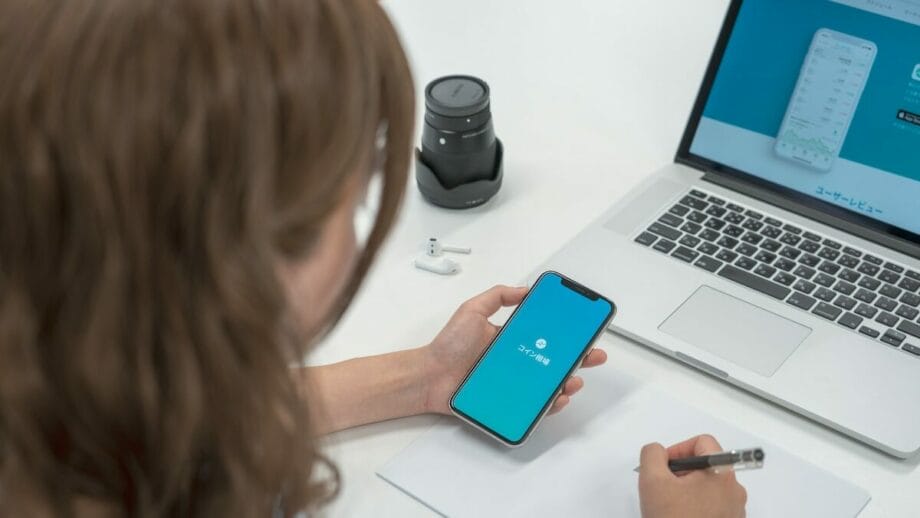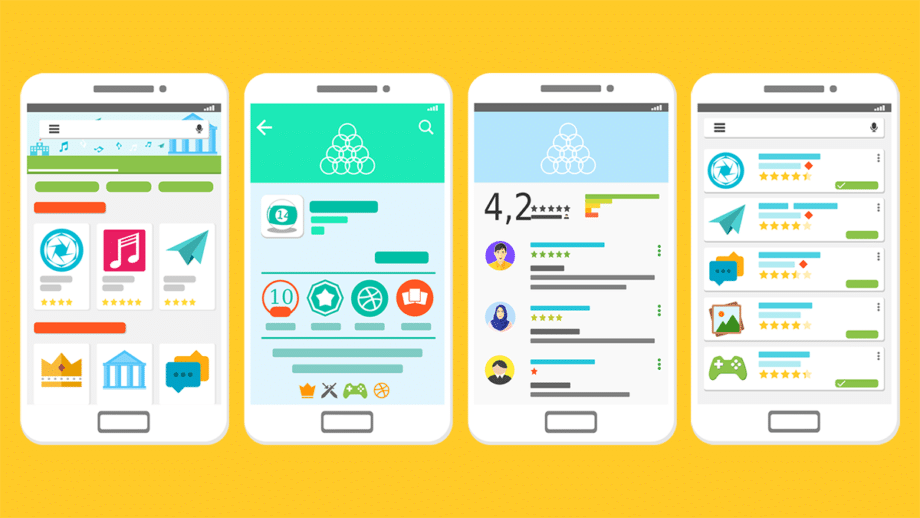Are you struggling to increase your app engagement rate and want users to stick with you for a long time? No doubt, you created a great MOBILE app for your business and has the best UI/UX, but your users are still leaving the app.
The best way is to gamify the app experience. No matter in what domain you operate, adding gaming elements to non-gaming apps soars the engagement rate.
Studies show that an average person has nearly 80 apps installed on their phone, while they use 30 apps. With increasing competition among mobile apps, you must tick users online and make your app gamified.
In this blog, let’s discuss what app gamification is, the benefits associated with it, and how to create app gamification strategies in 2024.
An Overview of Gamification in Mobile Apps

Gamification has always been a part of your lives for decades. Now, it’s live on your mobile app.
By gamification, we don’t mean that you enter a gaming zone, it means that some gamified elements are added onto the screen so that users can spend more time on the app.
Non gamified elements when added to the app such as rewards, point levels, leaderboard, etc., can increase your app engagement rate.
No matter in which industry you operate, you can add gamification features to any mobile app such as an e-learning app, productivity app, or any fintech app.
Duolingo, a popular language learning app, wants to improve user retention rates. When they started in 2011, the product manager of Duolingo realized that learning would become boring and monotonous in the long run.
So, they added gamified elements in every lesson such as in lesson grading, streak count, hearts, etc. When learning becomes more interactive, students intend to make it their daily habit.
Benefits of App Gamification

Creating a gamified app experience is profitable for businesses for the following reasons-
1. Increase the User Retention Rate
Most businesses focus on acquiring new customers. However, instead of putting hours into finding new users, it’s better to retain your existing users.
User churn rate is becoming a common cause these days especially when the attention span of a user is less than a goldfish.
When the app experience is turned into a gaming zone, users love spending time on such apps and are more likely to return to them.
Think for a moment that you are playing a game, completing levels, and earning a badge. That badge allows you to unlock a reward. Then, you feel motivated and are more likely to come back.
2. More Customer Satisfaction
Gamified experiences increase customer satisfaction as customers get small rewards on milestone completion.
When they participate in such events, they always come with an expectation of receiving those little achievements, new rewards, and more experiences.
The more value you provide the higher customer satisfaction.
3. Increases User Engagement
Gamification is a game-changer element for businesses who want to increase their user engagement rate.
When implementing gamification strategies, you’re playing with the user’s psychology, and users are drawn to it naturally because an ordinary app experience now turns into a gaming zone.
Even research studies back this statement up showing that companies that adopt app gamification strategies saw a 100 – 150% increase in engagement rates.
It’s a human notion that people are competitive by nature and when they get something in return for the time spent on it, they just love it.
Let’s talk about the Starbucks rewards program which added a gamification element in the app. The customers receive rewards when they make purchases.
They can use those rewards to unlock free drinks and food. Hence, its mobile app experienced a significant increase in user engagement rate.
What are the Various Types of App Gamification Strategies You Can Use?

Creating a mobile app is not a daunting task, but retaining your users and hooking them to spend longer time remains a challenging part on your side.
To combat that, there are app gamification strategies that leading software development companies have been following for a while now.
You can try it out now to enhance your user experience.
1. Rewards and Points
One way to stick users to your app is to add rewards and points to your mobile app. Users feel motivated when they receive rewards or points for completing their milestones. These are the good indicators that show that the person progresses within the game.
For Instance – Habitica, a habit-building and productivity app, has gamified experiences inside the app. Users receive rewards for completing their milestones. When they receive daily rewards, they are inclined to spend more time on the app.
2. Setting Challenges
Challenges make the app more enjoyable. It can be as simple as completing a task to performing a complex activity to attain a high score. This way, users are likely to spend more time on the app and achieve their desired goals.
You might have used Nike’s run club app that motivates users to go on a marathon, join weekly challenges, and do something extra like running for a certain distance and achieving their fitness goals.
It even uses the FOMO element to create timed challenges so users can act now because they feel they’re missing out or are short of time.
After all, there is a human tendency that they try to compete and when they see such challenges, they prefer to join them.
That’s how the company is playing with user’s psychology so they can spend more time on the app.
3. Leaderboards
Leaderboards show the performance of peers who perform well and receive the highest scores. This motivates others to play their part in completing activities to be a part of the scoreboard.
Monday app, a project management tool, uses app gamification strategies like a leaderboard showing the names of those involved in product-related discussions.

4. Progress Tracking
Progress tracking is a useful feature to add for enhancing the user experience as they get an overview of how far they are from completing their goal.
It helps users to track their journey, know where they are, and be aware of their progress at every touchpoint.
Calm uses a weekly progress tracking feature to keep users building consistent habits. Based on how many sessions the user completed or interacted with the content, their progress will show visually in the form of a ring, and it’ll glow.
That’s how they are keeping their users engaged on the app.
5. Quizzes
Another app gamification strategy you can use is to add quizzes. Quizzes provide more interactive experiences to the user and make them stick around on the app for a longer time.
You can have quizzes ranging from personality tests to arranging mini-games. They prefer to take part in such events with the motto of getting rewards or points.
Duolingo, a language learning app uses interactive quizzes to make the app experience more fun. By participating in quizzes, users can master new skills and hone them by receiving real-time feedback.
6. Badges
Since childhood, you have craved recognition and appreciation.
Now, gamification adds such capabilities to the app giving users badges or virtual rewards, so they continue to spend time on the app.
Badges foster a sense of accomplishment, instill confidence in users, and encourage them to share their happy wins on social media.
Even the world’s most popular social media app “Snapchat” uses the concept of badges to award users who have been sending streaks for a long time. The person with maximum streaks receives a best friend badge.
Another example of badges is LinkedIn, a B2B networking app awarding content creators and influencers with a top voice badge in the XYZ domain. When users get recognition, they actively take part in such stuff.
7. Negative Scoring
Do you use Grammarly for checking grammar or proofreading your drafts? Then, you might notice that this web app assigns a score to you.
The more grammar mistakes you make in a document, the more negative scores you will get. The app will deduct your points depending on your spelling or punctuation mistakes.
That’s a perfect example of negative scoring Grammarly uses as its gamification strategy.
Steps to Create the Perfect Gamification Strategy for Apps

You don’t have to do the groundwork for creating an app gamification strategy. Let’s discuss how you can increase your app’s user engagement.
Step 1 – Goal Setting
Be clear about the purpose behind the app gamification strategy. Do you want to increase user engagement on the app or drive customer loyalty?
What’s your end goal? What behavior are you expecting when the user interacts with the app?
Make sure to set SMART goals because that will keep you closer to your vision.
Step 2 – Know Your Target Customers
Identify the target customers for your app and create a user persona.
Spend some time doing online research, talk to them, and figure out what makes them tick online. What kind of rewards do they enjoy the most?
Step 3 – Gamify Your App
How will you make your app more interactive? That’s through gamified experiences.
Consider adding gamified elements to your app such as badges, leaderboard/scoreboard, rewards, points, and progress bar.
All these elements take your app experience to a new level and help users accomplish various goals such as watching your progress, getting a reward, obtaining a badge, etc.
Step 4 – Share Feedback with Them
When users do something cool on the app, you can share feedback with them and celebrate their achievements through visual pop-ups or messages.
This way, you can increase user engagement and keep them motivated.
Wrapping Up

Gamification when done rightly can bring good results in the future. It’s not a gimmick or a smart tactic that businesses have been using.
Creating a gamification strategy for the app lets users fall in love with your product, spend more time on it, and receive rewards. They feel excited because gaming elements on the app excite them and lure them to act.
But a gamified app isn’t an easy task. That’s where you need to partner with a company that provides custom software development services, so you won’t have to settle for a one-size-fits-all solution and get an app that increases your conversions.





